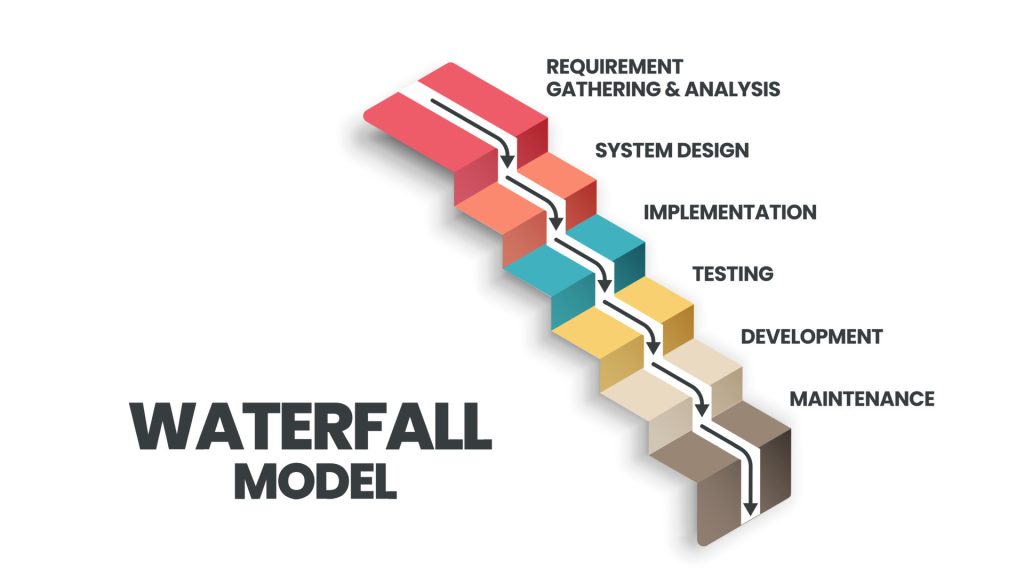
In the realm of project management, various methodologies have been developed to streamline the process of delivering successful projects. One such methodology is the Waterfall methodology, a structured and sequential approach that has been widely used in software development and other industries. In this article, we will delve into the intricacies of the Waterfall methodology, exploring its strengths, weaknesses, and the scenarios where it shines the brightest.
The Waterfall methodology is a traditional project management approach that emphasizes a sequential and linear progression through project phases. It is often compared to a waterfall, where each phase flows down into the next without the possibility of revisiting previous stages.
The Sequential Process
In the Waterfall methodology, projects are divided into distinct phases, each building upon the outputs of the previous one. These phases typically include requirements gathering, system design, implementation, testing, deployment, and maintenance. This sequential process ensures a clear direction and minimizes ambiguity.
Clarity and Documentation
One of the significant advantages of the Waterfall methodology is the emphasis on thorough documentation. Each phase requires detailed documentation, from initial requirements to final implementation. This documentation becomes a valuable resource for reference and ensures continuity, even if team members change.
Predictable Timelines
Waterfall projects are known for their predictable timelines. Since each phase has specific deliverables and a predefined schedule, it becomes easier to estimate project completion. This predictability is particularly beneficial when working with clients who require a fixed deadline.
Well-Suited for Small Projects
The Waterfall methodology is well-suited for small projects with clear and unchanging requirements. Its structured nature and lack of iterative loops make it efficient for straightforward projects that don’t demand frequent revisions.
Mitigation of Scope Creep
Scope creep, the tendency for project requirements to expand over time, is minimized in Waterfall projects. The method’s strict change control and documentation prevent unplanned changes, ensuring that the project stays on track.
Requirements Stability
For projects with stable and well-defined requirements, the Waterfall methodology is highly effective. It operates under the assumption that requirements will remain consistent throughout the project’s lifecycle.
Regulated Progress Tracking
Progress tracking in Waterfall projects is relatively straightforward. Each phase’s completion is a milestone, allowing teams to measure progress easily and assess whether the project is on course.
Strict Quality Control
Quality control is integral to Waterfall projects. Each phase includes its own set of quality checks, which accumulate to deliver a thoroughly tested final product. This attention to quality reduces the chances of major defects going unnoticed.
Client Involvement
Waterfall projects involve the client primarily at the beginning and end of the project. This can be advantageous when clients have a clear vision from the outset and appreciate seeing a fully developed product at the end of the project cycle.
Drawbacks of the Waterfall Methodology
While the Waterfall methodology offers numerous benefits, it also comes with its share of drawbacks. One significant limitation is its lack of flexibility. Once a phase is completed, it’s challenging to make changes without revisiting the entire process.
Limited Flexibility
Waterfall projects are not well-suited for dynamic environments where requirements are subject to change. Adapting to new insights or altering the project’s direction can be arduous and time-consuming.
Late-Stage Changes
Discovering necessary changes or adjustments late in the project can be problematic in the Waterfall methodology. These changes can lead to substantial delays, as going back to earlier phases disrupts the linear progression.
Risk Management Challenges
Risk management can be challenging in Waterfall projects. Since all the planning is done upfront, risks that emerge later might not have adequate mitigation strategies in place.
When is Waterfall the Best Choice?
The Waterfall methodology is best suited for projects with well-defined, stable requirements, where changes are unlikely and a predictable timeline is crucial. It’s an ideal choice for industries like construction and manufacturing, where sequential processes align with the nature of the work.
Conclusion
In conclusion, the Waterfall methodology presents a structured and disciplined approach to project management. Its benefits of predictability, documentation, and quality control make it a valuable choice for certain types of projects. However, its lack of flexibility and adaptability can hinder its effectiveness in dynamic environments.
More info: Waterfall vs Agile